DOD Defense Nanotechnology Research And Development Program 2009 | Insights Into Development Of Self Assembly Nanotechnology

Ana Maria Mihalcea, MD, PhD | substack.com/@anamihalceamdphd
This important document from 2009 explains the how the US military is the LEADER IN NANO TECHNOLOGICAL WEAPONS SYSTEMS worldwide - it has been their strategic focus for decades, working with DARPA to maintain this cutting edge worldwide. According to Louis Del Monte in the book ‘Nanoweapons’ the global investment in 2015 in nanotechnology was a quarter trillion dollars.
Background
Congress established the Defense Nanotechnology Research and Development Program, under Section 246 of the National Defense Authorization Act for Fiscal Year 2003.* The Department of Defense (DoD) vision for this program was to generate research programs in this new field that would ensure that the United States remains at the forefront of nanotechnology developments necessary to meet national security goals and avoid technological surprises. The overarching goal of the Defense Nanotechnology Program is to discover, control, and exploit unique phenomena of military importance that may be encountered in matter at sub-100-nm length scales.
Section 240 of the FY 2008 National Defense Authorization Act expanded the administration and reporting requirements associated with the Defense Nanotechnology Research and Development Program. It requires enhanced strategic planning and coordination of research plans. It also requires increased review, assessment, and reporting associated with technology transition to the application, manufacturing and the industrial base, and global research activities. Finally, the Director, Defense Research and Engineering (DDR&E) is directed to submit a biennial report on the program to the Committees on Armed Services and Appropriations of the Senate and the House of Representatives. These provisions are set out in the note to 10 U.S.C. 2358 “Research and Development Projects.” This report is the DoD response to this statutory requirement.
Approach
The DoD nanotechnology program is based on coordinated planning and federated execution among the military departments and agencies (components) (e.g., the Defense Advanced Research Projects Agency (DARPA) and the Defense Threat Reduction Agency (DTRA)). Nanotechnology currently represents a scientifically and technologically advanced research theme that has proven and expected value toward enhancing defense capabilities. This report was compiled by a team of personnel from all the DoD Components involved in nanotechnology research and technology and associated with the National Nanotechnology Initiative (NNI). Detailed technical and programmatic reviews of nanotechnology efforts were collected and collated to respond with current, planned, and expected projects and were augmented with studies to summarize global research efforts, transition progress, and industrial base status and requirements.
Why are so many people not informed about Nanotechnology developments and their extreme advancement? Here is why - because the military is highly interested and invested in this field and are keeping it very quiet. The DoD is the main developer of nanotechnologies!
Nanotechnology research remains a major national initiative, and DoD remains at the forefront as a major contributor—as it had been even before the inception of the formal NNI.
What is their interest area:
The primary PCAs will remain Fundamental Nanoscale Phenomena and Processes, Nanoscale Devices and Systems, and Nanomaterials.
The DoD has a long history of successfully supporting innovative research and development (R&D) efforts for the future advancement of warfighter and battle systems capabilities. Since the 1980s, DoD (including the Defense Advanced Research Projects Agency (DARPA), the Office of Naval Research (ONR), the Army Research Office (ARO), and the Air Force Office of Scientific Research (AFOSR)), have initiated numerous R&D programs focusing on advancing science and technology (S&T) at size scales below 1 micron (1,000 nm). Scientific breakthroughs and advances in the last 10 years have demonstrated the potential for nanotechnology to affect a tremendous number of key capabilities for future warfighting: chemical and biological warfare defense, high-performance materials for platforms and weapons, novel energetic materials, information technology, revolutionary materials for power and energy, autonomous vehicles, and miniature satellites. In support of the National Nanotechnology Initiative (NNI), DoD is a member of the Nanoscale Science and Engineering Technology (NSET) subcommittee of Committee on Technology of the National Science and Technology Council (NSTC). Twenty-three federal departments and agencies are members of the NSET, including the Intelligence Community. The NSET meets at least bimonthly to coordinate the federal government’s nanotechnology programs.
Look at this list - nanotechnology for biological warfare, bio nano interface for self assembly, created conductive nanowires for microelectronics, sensors, use metallic nanoparticles, silocon infrared technology
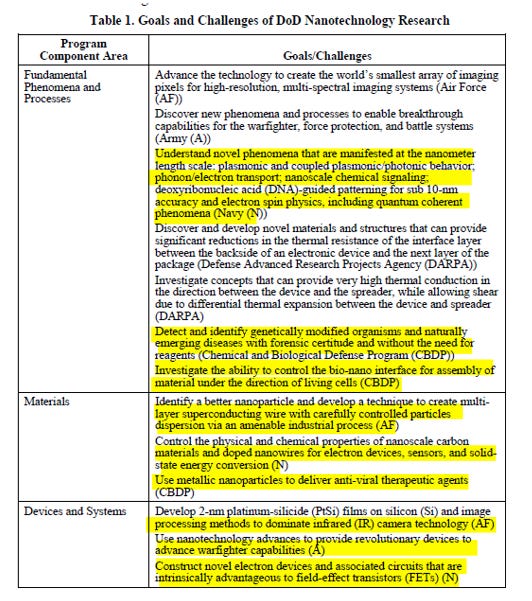
Of note, Dr. Hildegarde Staninger showed in 2006 this “goldenhead.” The golden tip is a sensor and or digital camera when coupled with high density polyethylene nanotube lens.
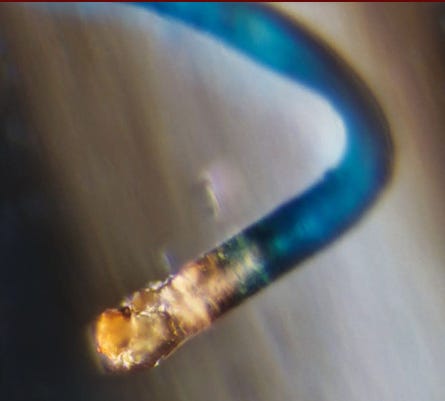
The development for antennas, sensors and metamaterials was also a major area. Remember how weapons expert Mark Steele explained that the metals in the Covid 19 injections and other “vaccines” are used for battlefield interrogation and satellite facial recognition. This is why I always say get the metals out - and I recommend EDTA.
Here is my interview with Mark Steele: Breaking News Interview: Warfare Against Humanity - Conversation With Weapons Expert Mark Steele - Truth, Science And Spirit, Episode 16
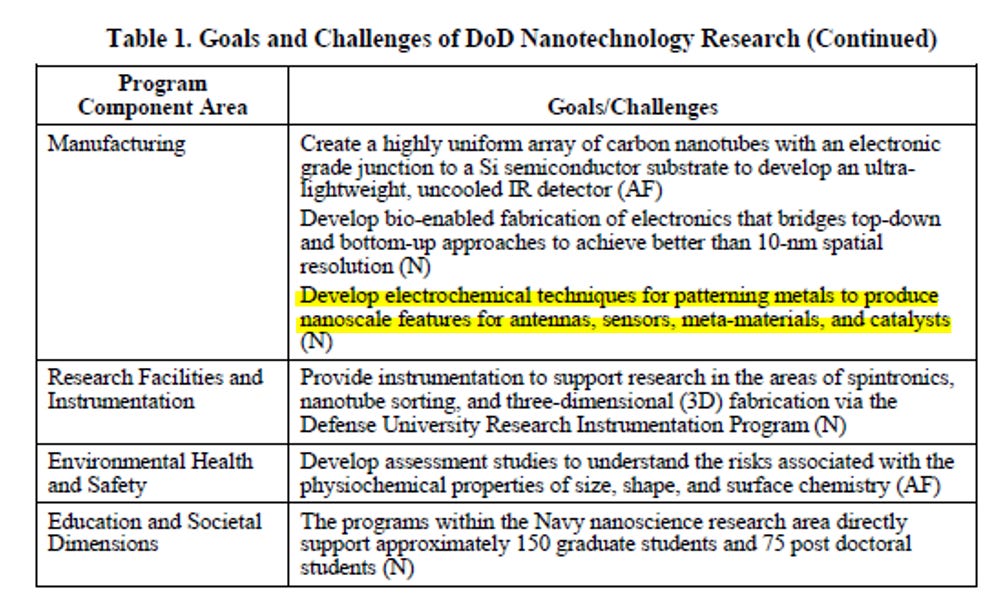
Here are their successes by 2009. What can they do in 2024?
Nanoparticle Lubricant Produced by Biosynthesis
Biological templates were successfully used to direct the synthesis and assembly of bimetallic nanoparticles. The performance of these nanoparticles was demonstrated as a conductive lubricant in microelectromechanical systems (MEMS) electrical switches at high current with no failure through one million hot-switching cycles. The size, shape, and composition of engineered nanoparticles must be carefully controlled during manufacture to give the needed optical, electronic, catalytic, and mechanical properties. It has recently been shown that biological molecules, such as peptide chains containing up to 20 selected amino acid molecules, can be used to synthesize engineered nanoparticles. This biosynthesis approach is a simple, flexible, real-time manufacturing capability that can produce a wide array of engineered nanoparticles in the field in response to locally identified needs. Potential applications include dechlorination of drinking water, decontamination of nerve agents, and electrically conductive lubricants.
A. The United States Army
1. Army Fundamental Phenomena
Photonics
Periodically aligned arrays of carbon nanotubes will be useful for the design of appropriate filters for wavelength division and multiplexing applications. The controlled electrical properties of carbon nanotubes (which can be conductive or
semi-conductive), combined with the ability to establish controlled arrays of sizes and spacings, make these materials usefully flexible for filters or signal sorting functions.
Piezoelectric Sensing
Studies have shown large changes in the two-dimensional (2D) piezoresistance of electrons confined in quantum wells. Piezoresistance in which the material resistivity is related to dilation has been used for sensing strain, but these materials have often been too stiff for sensitive applications. The technical challenge is to use this effect to create a new family of extremely sensitive strain sensors.
Enhanced Thermoelectric Properties
Study of individual nanowires has established that surface states play an important role in determining thermoelectric properties of those wires. The potential to enhance the thermoelectric properties is particularly relevant to Army efforts to develop higher performance, lower power consumption thermoelectric coolers for IR detectors.
1. Army Nanomaterials
Improved Polymer Composite
Nano-engineered fiber coatings have been developed to improve the fiber/matrix interface properties of polymer matrix composites. Increased energy absorption while improving or maintaining other composite properties has been demonstrated at the laboratory test specimen level.
Chemical Sensing/Decontamination
Basic research has created a class of amplifying fluorescent polymers that detect hazardous substances with extremely high sensitivity. In the same research area, a family of nano-engineered, self-segregating additives that have the ability to transport active materials to the polymer/air interface to self-detoxify contaminated coatings has been developed.
Please remember that quantum dots that manipulate spin states in synaptic clefts can be used for what? Mind control! Remember Dr Robert Duncan's presentation on this topic:
They were able to control quantum spin states, aka information content of the material world in 2009. If you wanted to reprogram humanity in a stealth way, would you use assembly nanotechnology that assembles and disassembles and has quantum tunneling properties?
A. The United States Navy
1. Navy Fundamental Phenomena and Processes
Electronics
Detection and control of fundamental magnetic spin phenomena will have far- reaching impact in several technologically important areas, most immediately quantum computation. The Navy demonstrated the capability to generate, modulate, and detect pure electron spin currents in Si for imprinting information into the Si spin system. The ability to control the spin of individual quantum shell states of self- assembled quantum dots by applying a spin-polarized bias current was demonstrated.
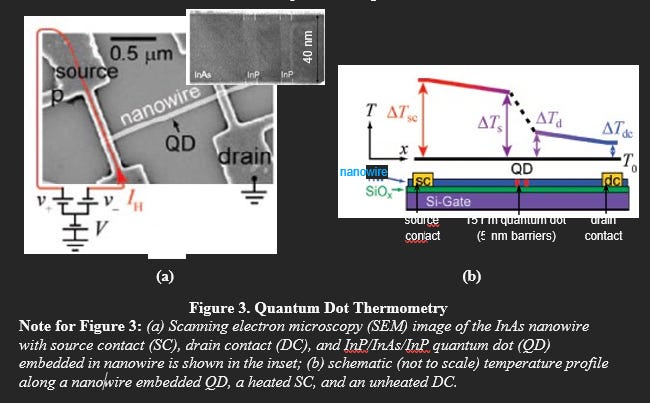
Fundamental Thermal Properties
The quantum dot thermometry accomplishment has application to many areas, as does most fundamental science research, but emerged from the fundamental thermoelectrics studies of nanowires.
Nanostructure-Enhanced Thermoelectric Properties
The ability to partially decouple phonon and electron transport through the design of composite semiconductor systems incorporating epitaxial nanoparticles has been experimentally demonstrated in nano-structured nanowires, thin films, and bulk materials. Theoretical models support the nanoparticle size-dependent reduction of thermal conductivity with minimal impact on electrical conductivity that has led to record thermoelectric performance in these materials. Higher efficiency, solid-state energy conversion applications enabled by these advances include fuel-flexible, portable power generation, vehicle waste heat recuperation/fuel efficiency, and electronic device/systems cooling.
1. Navy Nanomaterials
Magnetics
A cobalt-rich, nanocrystalline alloy that had significantly enhanced fracture toughness over conventional iron based magnetic alloys was developed. Yield rates for the fabrication of complex magnetic components can be as low as 20%. Damage- resistant magnetic materials offer expanded motor design options with significantly reduced manufacturing costs.
Semiconductors
The first discrete quaternary nanocrystal, AgPbmSbTem+2 (m = 1-18), has been synthesized by a low-temperature solution route and demonstrates a new approach to achieve homogeneous solid-solution alloys with size- and composition-controlled semiconductor properties otherwise unobtainable in the bulk. This class of semiconductor nanocrystals has potential applications in thermoelectric energy conversion, IR sensing, phase change memory, and photovoltaics.
2. Navy Devices and Systems
Spin-Based Devices
Numerous electron spin-based devices have been demonstrated, including the first spin-polarized light emitting diode (LED) and the first spin polarized quantum dot vertical cavity surface emitting laser (see Figure 4). In a significant advance toward
technically viable spin-based electronic devices, the capability has been demonstrated to efficiently inject a current of spin-polarized electrons from an iron thin film contact through an aluminum oxide (Al2O3) tunnel barrier into Si, producing large electron spin polarization (see Figure 5). This is a key enabling step for developing Si-based electronic devices, which are expected to provide higher performance with lower power consumption and heat generation.
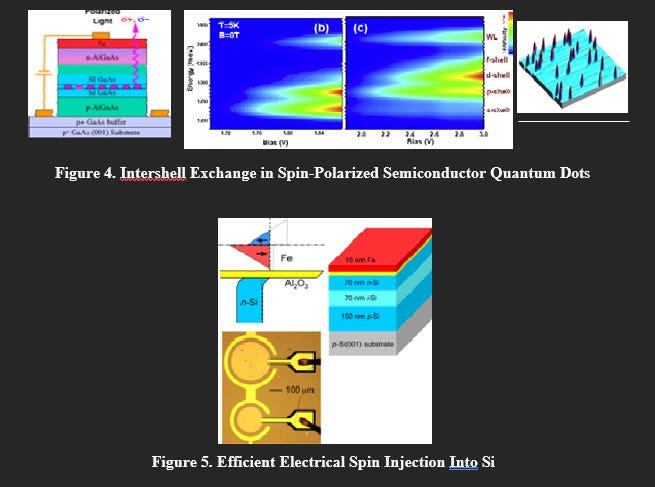
1. DARPA Manufacturing
DARPA is developing a direct-write, multi-beam, electron beam lithography tool (see Figure 8) with sub-10-nm spot size control that will address the DoD’s need for affordable, high-performance, low-volume integrated circuits (ICs) and the commercial market’s need for highly customized, application-specific integrated circuits (ASCIs) in the Maskless Direct-Write Nanolithography for the Defense Applications program. This program will provide cost-effective technology for low- volume nanoelectromechanical systems (NEMS) and nanophotonics initiatives within the DoD. Transition will be achieved by maskless lithography tools, installed in the Trusted Foundry and in commercial foundries. These tools will enable incorporation of state-of-the-art semiconductor devices in new military systems and allow for the cost-effective upgrade of legacy military systems.
A. The Defense Threat Reduction Agency (DTRA)
1. DTRA Chem/Bio (CB) Defense Functional Nanostructures
DTRA-CB is developing computational methods for predicting the physical and chemical properties of DNA-coated nanoparticles. This technology will replace current Edisonian (i.e., trial and error) approaches and enable the a priori design of nano-structured materials with tailored characteristics, such as molecular recognition, catalysis, and signal transduction. Currently funded programs include the design of artificial membranes and synthetic receptors that will be used to construct robust sensors for chemical, biological, explosive and radiological detection.
Please note this self assembly of BIOELECTRIC CIRCUITRY. Sound familiar?
2. DTRA CB Defense Biomimetic Design Rules
DTRA-CB is using the principles elucidated from bacterial communication circuitry to develop minimal biological circuits that will form the bases for the
bottom-up design and assembly of bioelectronic circuitry. In addition, the design rules for the self-assembly of protein nanostructures are being investigated. Elucidation of such first principles of biological design will enable the design and assembly of complex molecular machines that can be incorporated into materials (e.g., fabrics and coatings) to give them a range of functionalities such as selective porosity, catalysis, information processing and the ability to alter structure and color in response to environmental conditions.
3. DTRA CB Defense Nanoscale Platforms
DTRA-CB is developing nanoscale platforms to enable DNA cloning without the use of cells. A related program uses nanoscale polymerase chain reaction (nano-PCR) with a focus on ultrasensitive, rapid, high-fidelity identification of natural or genetically engineered pathogen strains. These programs will have sensitivities three orders of magnitude better than conventional PCR, permitting single molecule amplification from complex (i.e. dirty) environmental samples.
4. DTRA CB Smart Hazard Mitigation
The Protection and Hazard Mitigation area is developing the capability to not only detect and decontaminate a hazardous agent, but also to send a signal that it has done so. One part of the Protection and Hazard Mitigation area that converges nanotechnology with information technology is the Smart Hazard Mitigation system (see Figure 9).
Encapsulated nanoporous beads AKA nano and microbubbles with nanopores.
Microbubbles Are Microrobots That Build Microchips - Correlation with COVID19 Microscopy Findings
Did you see SELF AMPLIFICATION of molecular switches AKA REPLICON machines? SMART = Artificial Intelligence controlled.
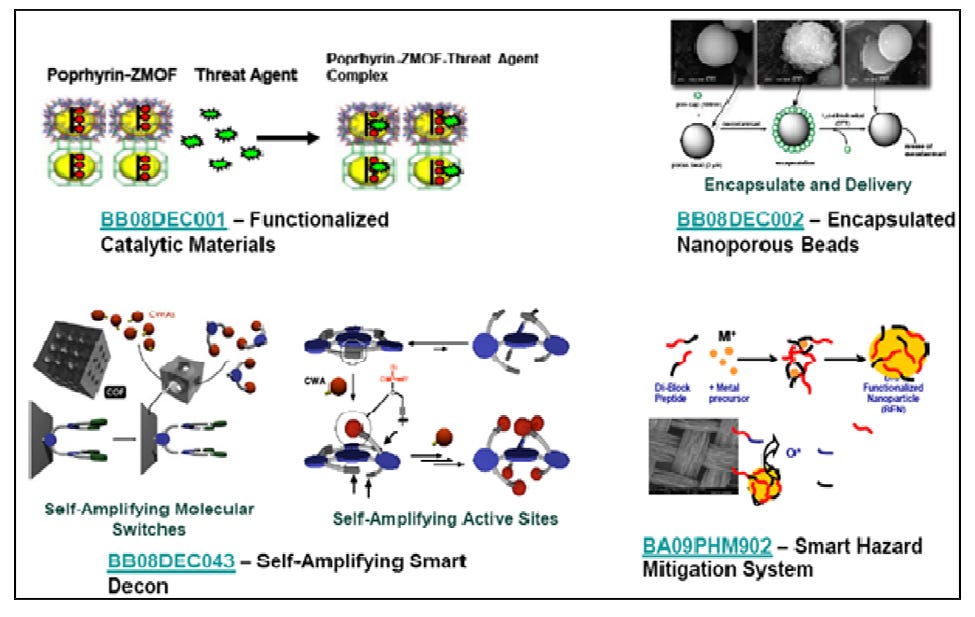
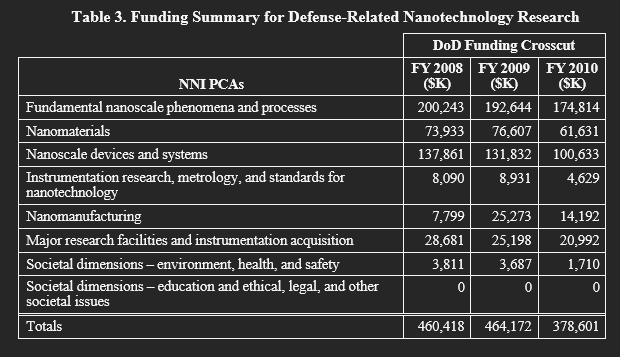
Who else is the DoD collaborating with? Department of Energy, NASA all are implicated in geoengineering operations spraying smart dust and advanced nanomaterials on the civilian population. And the Army is collaborating with the NIH on tumor destruction… but we have not cured cancer yet even though this has been going on since 2009 and before - and the same nanotechnology used for “tumor destruction” has been weaponized in the COVID19 injections and injectable medications.
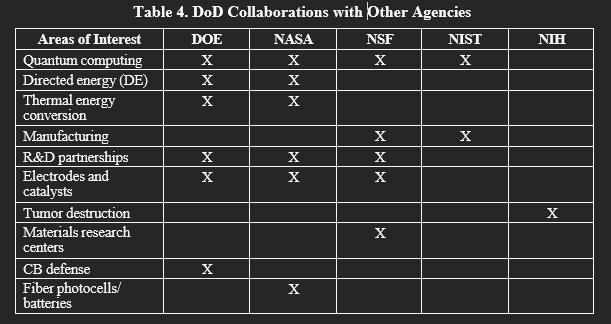
I. Global Research Activities8
Trying to determine what applications will reap the greatest benefits from specific nanoscience projects is often difficult. Consequently, unless the funding source is revealed, the nanoscience research projects designed to meet military needs are often not obvious. For some defense-oriented foreign countries, notably Israel, intentions to develop nanotechnology for defense applications are well known and publicized. Unfortunately, most countries are not as transparent (in revealing the defense-oriented nature of funding) as the United States and Israel, making it necessary to follow overall government spending on nanotechnology (where possible) to assess the overall strength of the nanoscience research sector of foreign countries. The major international players in nanoscience research are the United States, the European Union (EU), the Peoples Republic of China (PRC), Japan, and the Asian Tiger Economies of Singapore, South Korea, and Taiwan. The United States and the EU have stood at the forefront of nanoscience, in terms of quantity and quality of research since the birth of the field.
In the rest of the document the nanotechnology programs of international nations are listed.
Summary
The self assembly nanotechnology we see and the advanced nanotechnology and smart dust that has been sprayed on humanity for decades, has been developed and advanced within military programs with private and government partnerships. The US military has been a world leader in the development on nanoweapons for decades.
It is my understanding of the global situation that the DoD’s partnerships through DARPA with pharmaceutical companies like Moderna and Pfizer have been the key players to deploy nanoweapons against the civilian population. It is DARPA that funded Moderna in 2013 to develop the mRNA platform. Of note, Moderna also partnered with Septodent, manufacturer of dental anesthetics.
Beware of the military industrial complex and the military Big Pharma complex.
Moderna and Septodont’s pharma division announce long-term agreement
Document Source: https://www.nano.gov/sites/default/files/pub_resource/dod-report_to_congress_final_1mar10.pdf
Original Article: https://anamihalceamdphd.substack.com/p/dod-defense-nanotechnology-research

Truthful comments that add value to our readers, such as additional information, clarification, validation or worthy rebuttal will be posted. The goal of comments on articles is to gain additional truth.

Comments ()